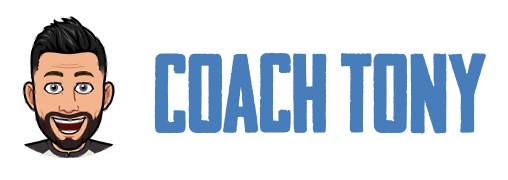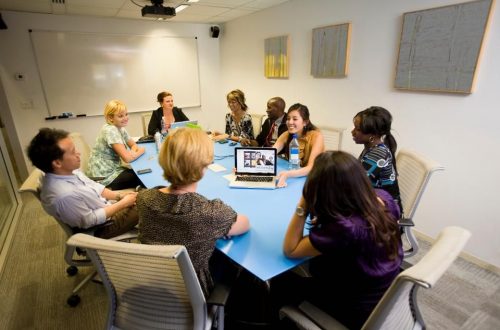
CES 2019 – Recap from Eureka Park and the home of startup enthusiasm
Eureka Park is a really interesting spot for CES in that it’s the “startup hall” of sorts. This is where all the new products come to demo. The other venues at CES are where the polished, mature brands come to showcase their shiny new products, but EP is packed with early-stage product buyers and aspiring entrepreneurs and inventors. It’s a different kind of buzz.
That’s especially true on the first floor. Upstairs in EP is the spot to find those newer products that have “graduated” somewhat and are now in year 2, 3, or 4 of their life cycle. They’re a bit more mature and have solid distribution, so they’re launching into their next phase of growth. Regardless, it’s a really exciting place to be.
Maturity Prevails
I spent much of my time at CES talking to product creators and founders, entrepreneurs, and inventors. My biggest takeaway was that the “Creator” has matured.
In previous years at CES, there were quite a lot of people just walking around with an idea—oftentimes without business cards or even business names! They may have had something with them that barely passed for a prototype, an explanation or a concept drawing of some sort.
This year it is very different. One creator I spoke to with a small robot impressed me by walking up and delivering a clear & concise elevator pitch and brief 90 second demo of her product. It helped that her product was small, yes, but she had everything dialed and she was ready to go.
I ran into another company that won Home Shopping Network’s American Dreams Pitch Competition from CES 2018, and in the past year has absolutely exploded due to their professionalism and business-like approach to their creations. Vicki Mayo from Touchpoint Solutions was one of the aspirational creators that impressed us in 2018, and fast forward one year, and she’s got one of the busiest booths “upstairs”
Overall, the creators are just taking it a little more seriously, so the barrier to entry is higher for newcomers. More and more founders are coming to us that are on their second or third project, or they’ve left a good job at a large company to go pursue their passion.
More and more, the creators we’re meeting have been through this before in one way or another, and they’re now demonstrating that experience and using it to approach their projects differently. I’m having a lot more thoughtful conversations, much earlier in the creation process.
Entrepreneurs – Some Still in Process
I only had one really disappointing encounter. This entrepreneur had a crowdfunding campaign running and was actively selling product. So now that he’s pretty much fully launched, he decided it was the right time to ask for help figuring out shipping.
Sorry, but it’s too late. You’ve set price points, found customers, decided what countries to offer sales in, and basically let the market dictate what your shipping costs will be. You’ve made decisions you can’t walk back.

Best case scenario is that you continue on this road and just don’t make as much money as you could have. In the worst case scenario, you’re going to lose money. Whether the product is good or not won’t matter because poor planning will have been its downfall.
But overall, we saw some really mature entrepreneurs this year. In fact, we had multiple companies approach us who had consultants or specialists traveling with them to specifically help guide a next step in their journey..
One woman came in with her product and a consultant whose sole job was to procure and bring in talent. (Her product relies on finding global talent and relocating them to Silicon Valley.) She seemed to be acutely aware of all the small, but complex needs of getting her business off the ground properly, which is why she approached us to talk.
She wasn’t launching for six months, but she came to us and said, “I have all these things figured out, but I’m not ready to launch until I get my shipping and fulfillment questions answered.” It’s such a relief to hear someone thinking and talking like this! To fulfill and ship your product successfully, and to finalize that relationship between buyer and seller, you need to know the process of actually selling the product far in advance.
Overwhelmingly, everybody that we talked to is making these plans and having these considerations four, five, or six months in advance, and that’s absolutely great to see. That’s what needs to happen.
Before you launch a crowdfunding campaign, you need to have your shipping costs figured out. You need to understand how those costs can help or hurt you.
We spoke with someone who was playing around with the idea of bundling product. He was planning to sell his product in a three-, six-, nine-, and 20-pack.
We helped him figure out, though, that the value of the 20-unit pack actually surpasses the de minimis value for most international shipments (that is, the point at which you become responsible for paying duties and taxes to bring the item into the country). Had he gone forward without talking this through, this error could have really hurt him. Instead of being happy about saving money due to the lower unit price of the 20-pack, customers would be mad about paying taxes and duties and, in the end, paying more per unit than the person who purchased a nine-pack.
These are the sorts of things you have to catch. It’s so important to have these conversations early on and iron things out before your campaign launches.
Support Systems
Another encouraging thing I saw at CES this year is that countries and governments are starting to pay attention to the value of startups. All over the Eureka Park area, there were Trade Organizations and business development reps from a handful of international governments.
Singapore had an expressive 80-by-80 section of the show floor that was dedicated to showcasing product inventors from their country. France had a huge presence last year and was there again this year. So was Holland. Right near our booth were also areas for Northern Ireland, Romania, Luxembourg, the United States, and Israel.
These were all government-sponsored economic development initiatives. And it’s so good to see these sorts of support organizations being put in place. The businesses being showcased and supported by their countries have an even greater chance of succeeding in the marketplace.
Another way we saw businesses support product creators is by using booth space to cross-promote. At our booth, for instance, Ingram Micro had a number of customers who we’ve helped with shipping and logistics and have also crowdfunded on Indiegogo. They got to show off their product and benefit from exposure to the crowd we drew.
Arrow Electronics (another Indiegogo partner) had a similar setup highlighting folks they’ve done business with. This is also happening with certain other accelerators, incubators, and venture capitalists. The companies that help support these startups and get their products to market are now helping to give them visibility at CES as well.
The Future of Crowdfunding
In the startup world at CES 2019, there was generally a feeling of things maturing. Crowdfunding is more than just an option now—it’s a marketing channel, it’s an audience builder, it’s a large and growing tool in a “go to market” toolbox.
Companies launching products right now seem to be setting themselves up for success more so than in the past. There was also an exciting level of confidence coming from our team at Ingram Micro, the Indiegogo team, and the companies that have shipped with us before that are now on their second product.
We know that some folks are skeptical of crowdfunding and startup areas, but one reason we undertook this partnership with Indiegogo was to really work hard and ensure the crowdfunding product ordering experience doesn’t need to suck anymore. It has always been sort of a joke that if you buy something on a crowdfunded site, good luck having it show up. That problem isn’t solved by any means, but it’s trending in the right direction, which is a good thing to see. This—and everything I saw at CES this year—makes me feel positive about and excited for the future.
This article first appeared on linkedin.com on January 21, 2019










